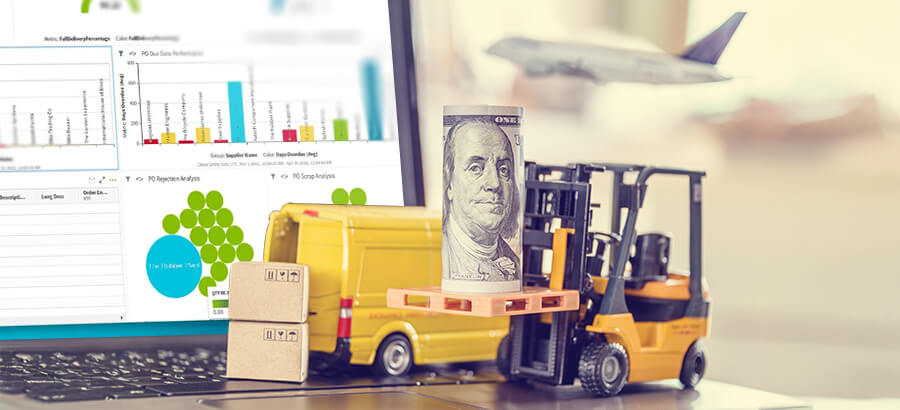As efficiency is crucial for businesses to remain competitive, many manufacturers are looking at all aspects of their operations to identify gaps and address them through either process improvements or by introducing relevant automation technology.
One area that is often overlooked is the accounts payable (AP) process. Inefficiencies in AP can lead to delayed payments, lost discounts, and damaged vendor relationships. In this blog post, we’ll explore some of the common issues that manufacturers face in their AP process and how automation software integrated with an ERP can help address them.
1. Manual data entry errors
Have you ever been in a situation when your finance person mistypes an invoice number, the payment amount, or the vendor’s name while entering it into your finance system? If so, I’m sure you’re familiar with the impact it can have. Errors can obviously result in delays of payment and inevitably will damage your relationship with that vendor.
Modern technology solutions such as AP automation software can automate the data entry process, which significantly reduces the potential for errors. The software can automatically capture invoice data and match it against existing purchase orders and receiving reports, ensuring that all information is accurate. You also have the flexibility to manually intervene and address any exceptions.
2. Tedious and time-consuming process
Let’s face it, the manual AP process can be incredibly tedious and time-consuming. Your employees may spend hours manually entering data into your accounting system and matching invoices to purchase orders. This inefficient process drains your human resources in low-value repetitive tasks.
With the help of AP automation software, you can reduce the amount of work required to process AP transactions. This automation frees up employees to focus on more strategic tasks, such as financial analysis, which can have a meaningful impact on your bottom line. When you integrate it with an ERP, it eliminates the need for any manual uploads, downloads, data synchronization, or duplicate data entry and your ERP data will stay up to date in real time.
3. Lost discounts
As a manufacturing business, you likely receive early payment discounts from your vendors. However, delays caused by manual AP data entry may not allow you to take advantage of these discounts.
With the help of AP automation, you can streamline the payment process to enable your business to take advantage of these discounts. Over time, these savings can be significant enough to be reinvested in other areas of your business to facilitate growth.
4. Difficulty in tracking invoices
When invoices are processed manually, it can be challenging to track their status. A manufacturing company I know of used a manual AP process and struggled to keep track of their invoices. Their finance team was constantly bombarded with calls and emails from vendors inquiring about the status of their payments, which actually compounded delays as resources were being disrupted from their data entry tasks. This was not only frustrating for the finance team but also negatively impacted their relationships with vendors.
Integrating your ERP with AP automation software provides a centralized platform for tracking invoices and payments, making it easy to see the status of all invoices in real time. This way you can streamline your accounting operations and gain visibility into your financial data. It reduces the potential for delays and provides timely insights into your finances.
5. Lack of visibility and reporting
Manual AP processes can make it really difficult to gain visibility into financial performance. Another company I know of was struggling to generate timely and accurate financial reports due to the inefficiencies of their AP process making it difficult to make informed business decisions. Their accounting team was manually entering data from invoices, purchase orders, and receipts into their system, which resulted in discrepancies. Subsequent investigation into the actual cause of discrepancies sucked up a huge number of hours, again compounding the problem of resources being taken off task.
By implementing AP automation software such as DASH AP Robot and integrating it with ERP, manufacturing businesses can streamline their AP process, reduce costs, and improve their financial management. By automating tedious manual tasks, businesses can free up employees to focus on more strategic tasks, take advantage of early payment discounts, maintain positive business relationships with vendors, and gain greater visibility into their financial performance.
You can watch this webinar to learn more about how artificial intelligence-enabled automation can help meet your business needs.







